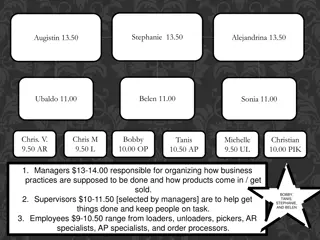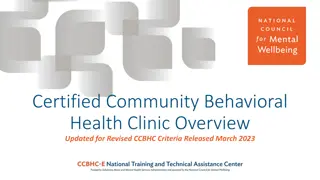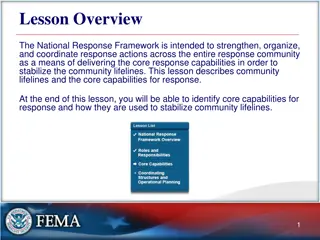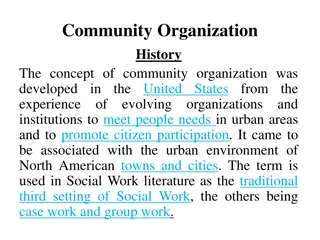Guide to Starting a Company for UMass Community
This guide provides detailed steps and guidelines for UMass faculty, researchers, and students looking to start a company. It covers the four-stage approach, market value determination, startup planning, and more. Resources and assistance available at UMass are also highlighted to support individuals in their entrepreneurial journey.
Download Presentation

Please find below an Image/Link to download the presentation.
The content on the website is provided AS IS for your information and personal use only. It may not be sold, licensed, or shared on other websites without obtaining consent from the author. Download presentation by click this link. If you encounter any issues during the download, it is possible that the publisher has removed the file from their server.
E N D
Presentation Transcript
So you want to start a company? A Guide for UMass Faculty, Researchers and Students
Table of Contents So you want to start a company? Guidelines for UMass Start-ups The Four Stage Approach to How to Start a New Company But before you start . Stage 1 --On Your Marks -- Determining Market Value Stage 2 Get Ready! -- Can the Start-up Meet the Market Needs? Stage 3 - Get Set!-- Start-up Plan for Success Stage 4 GO!! -- Launch and Operate Summary
Guidelines for UMass Start-ups These guidelines apply to most start-ups whether you re a student, researcher or faculty member, These guidelines are taken from best practices and are consistent with other schools and used by investors and entrepreneurs If you find these concepts daunting, there are resources immediately available to help you understand these slides for example, see: The resources that are available to you on your campus OTCV in the President's office will also work with and help direct you to other resources Massachusetts Technology Transfer Center (MTTC), which offers several services to assist UMass personnel with start-up: http://www.mattcenter.org/ 3
FOUR STAGE Approach to How to Start a New Company Stage 1 on your marks! Test your idea: make sure you re solving a real-world problem Stage 2 get ready! Understand your market and confirm a start-up is the best way to reach that market Stage 3 - get set! Develop a business plan and put together the elements of the company Stage 4 - GO!! Launching the company. Each start-up is unique and may follow a modified approach! OTCV and the MTTC can help you plan meeting the intended outcome of this approach 4
But before you start . Be sure to contact OTCV as early as possible to inform them of your idea and your plans to start a company Work with OTCV to begin the process of protecting intellectual property rights to your idea, to the extent possible. Identify your core team of founders the group you will work with to move your ideas forward. 5
The First Stage Determining Market Potential Stage 1 On Your Marks! Test the idea: make sure the idea is solving a real-world problem Address the following to determine if the idea has commercial value: Articulate a significant market need that for which your idea is a solution Describe specifically the customer - who will buy this and why Name a similar product or service on the market that is similar to this idea. How are customers solving this problem today? Strong start-up ideas can identify a need in the market for which the idea is a much better potential solution Start by thinking about the idea in terms of customers and customer need. After all, without customers, there is no business! A technology in search of a market may not be a good candidate for a start-up. POINTS TO CONSIDER: Start-ups are not for everyone. Talk with (many) others who have started companies to learn from their experience and the commitments they have made When should you find a business partner entrepreneur to help you? OTCV can assist you. You may want outside help right away or perhaps you would like to undertake this project alone for a while At this stage, do not concern yourself with finances, product development, operating a company or any of the issues surrounding and involving an actual company Concentrate on the customers and what they need 6
Stage 2 Can the Start-up Meet the Market Needs? Stage 2 Get Ready! Understand the market and confirm a start-up is the best way to reach that market This stage comprises two very big concepts:: Describe the idea s market(s). Here are but a few questions to answer: The size and annual growth of the market Identify the top companies in that market, particularly if they may be competition Identify the top products or services that serve the market Provide your Rationale that a start-up is the best way to reach that market Begin to develop the business model. Describe how a company will create value Describe what the company would actually do Begin thinking about whether it s a product or a service (or a combination of both) that would service the market Confirm that the start-up will be able to offer that product or service, at a competitive price and still make money Each Start-up is different some are quick to market, some require investment and some are 5 guys in a garage for 20 years Match your plans and that of the company 7
Stage 3 -Start-up Plan for Success Stage 3 Get Set! Develop a (business) plan and put together the elements of the company This stage also comprises two sizeable tasks: a business plan and elements of the company The business plan is a document to help the start-up team go from where it is today, to where it wants to be in one year, three years, five years and beyond: It is not just an analysis of products, markets and competitors, BUT A living, time-driven plan that explains why and how this product (or service) will be developed and sold in this (these) market(s) and why it s better than the competitors Milestones to be achieved along the way Key elements of the company include: People/team, counsel, advisors, board members Resource requirements: people, technology, instruments Financial plan, implementation plan, sales and marketing plan, exit (sale of the company) plan All of the elements may not be required to launch the company. The plan should elucidate what the team must have in place to launch and what it can add thereafter 8
In Step 4-Launch and Operate Stage 4 GO!! Launching the company It s time to move from paper (computer screen) to real live operations Negotiating any license or option with OTCV Incorporate Determine any equity disbursement among the team members Find and close the financing with appropriate investor(s) Setting up an office and possibly lab Management, management, management Sales Operations Contracts of so many types 9
These four steps are an outline Clearly people spend their lives perfecting the art and science of entrepreneurship These simple slides are intended to give a UMass faculty member, student or researcher a basic understanding of the entrepreneurial stages from idea to launch The website lists the university resources available on each campus and system-wide, to assist you with this exciting endeavor there are many people to help if this is your first start-up We urge you to meet with OTCV and the MTTC and take advantage of the resources that are available to help you Good luck! 10











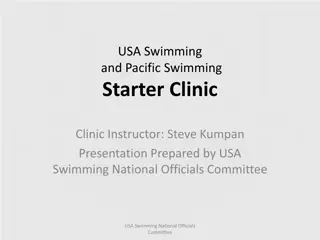


















![Year-End Business Report for [Company Name]](/thumb/131798/year-end-business-report-for-company-name.jpg)



